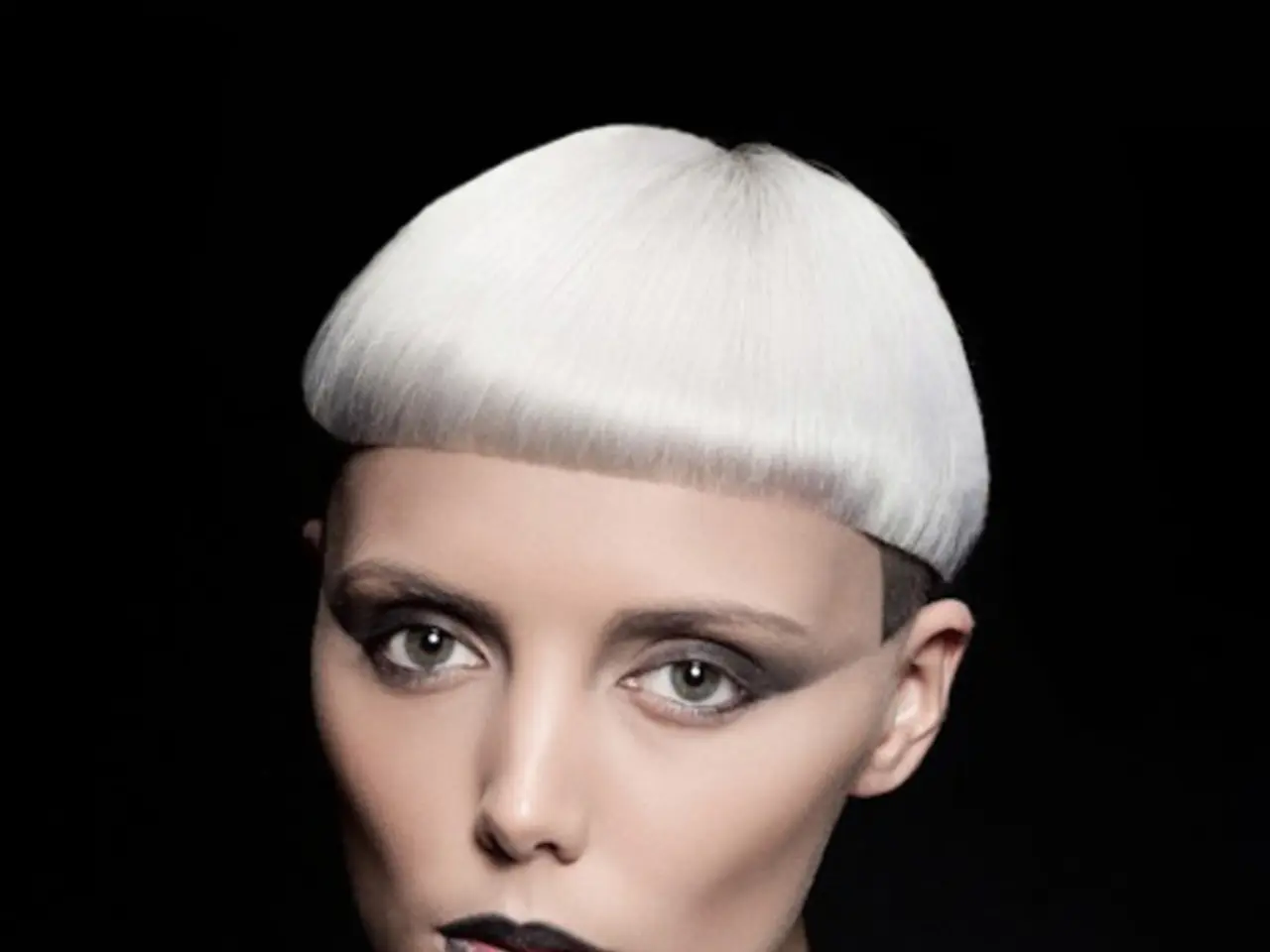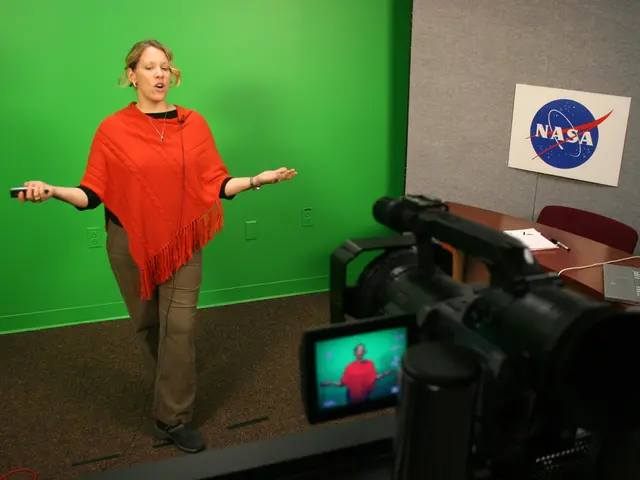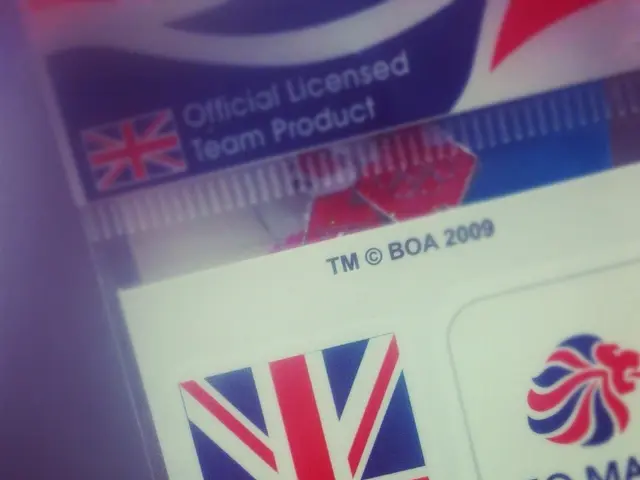Artificial Intelligence Falsely Interprets Black Women's Hair Styles-Potential Occupational Losses Ensuing
In a recent experiment, two AI tools, Clarifai and Amazon Rekognition's AI, showed similar results that raised concerns about bias in the evaluation of Black women's hairstyles. The study, conducted in August 2025, used images generated by DALL-E, ChatGPT's image generator.
The research revealed that Black women with straight hair received the highest professionalism ratings across all three AI tools, while braids were not assigned intelligence. This disparity is concerning as it may lead to automatic rejection of Black women candidates who change their hairstyle, as the systems may not be able to verify their identity.
For white women, the AI was able to recognise her hairstyles as the same person, except when the long straight hairstyle was compared to the bob hairstyle. The long curly hair received lower ratings compared to the other three hairstyles it was compared to. The white woman's hairstyles included shoulder-length straight hair, a short pixie cut, a bob style, and long, curly hair.
The findings of the experiment highlight the presence of biases that disadvantage Black hairstyles, particularly those reflecting natural hair textures and styles such as braids, locs, and afros. This reflects underlying issues of hair discrimination and texturism—prejudices based on hair texture and styles commonly associated with Black people.
Organizational psychologist Dr. Janice Gassam Asare's research further demonstrates that AI does not objectively assess hairstyles but often mirrors and amplifies societal biases.
In the workplace context, this biased AI evaluation has important implications. Employers using AI-driven software for applicant screening or employee evaluation that incorporates facial analysis or image recognition technologies may unfairly score or rank Black women negatively based on hairstyle rather than qualifications. This perpetuates hair discrimination, which is a form of racial and cultural bias.
Concepts like culture fit and subjective rubrics or scorecards used by AI may implicitly penalise hairstyles that deviate from Eurocentric norms, reinforcing the exclusion of Black hair expressions perceived as “unprofessional” or “inappropriate.” Without human oversight to identify and correct these biases, AI tools risk perpetuating systemic inequalities.
Legal and social responses include the CROWN Act (Create a Respectful and Open Workplace for Natural Hair), which prohibits discrimination based on hair texture and protective hairstyles in employment and other areas. The Act aims to counteract the kinds of biases that AI systems may replicate or exacerbate, reaffirming the rights of Black individuals to wear their natural hair or culturally significant styles without penalty.
Effective use of AI scoring requires transparent rubrics, diverse training data, and human oversight to mitigate AI-driven hair bias. Awareness of these issues is crucial to prevent AI from reinforcing racial inequalities in workplace hiring and culture fit assessments.
It's essential to educate ourselves and our workplaces about hair discrimination, texturism, and the CROWN Act to understand how these issues manifest in society and the workplace. Workplace policies and practices should be inclusive and equitable, and grooming and appearance policies should be reviewed to ensure they are not discriminatory.
In addition, the experiment involving Anthropic's Claude showed that the AI tool rated the braid hairstyle more positively and gave the TWA (teeny-weeny afro) the highest intelligence rating among the Black woman's hairstyles. This suggests that there is room for improvement in AI systems to reduce biases against Black hairstyles.
For Black women in workplaces that adopt facial recognition and facial analysis technology for access to workplace tools or buildings, this could lead to heightened scrutiny, denied entry, delays in verification, and being locked out of systems. It's crucial to ensure human oversight at every step of the hiring process when using AI to aid with decisions.
During the hiring process, candidates should be evaluated based on objective criteria, and rubrics and scorecards should be integrated into the process. If culture fit is included as a hiring metric, it should be clearly outlined and defined.
In conclusion, AI's perception of hairstyles can be influenced by embedded racial biases, leading to hair discrimination and texturism in workplaces using AI tools. The CROWN Act and similar regulations seek to address these biases legally. Effective use of AI scoring requires transparent rubrics, diverse training data, and human oversight to mitigate AI-driven hair bias. Awareness of these issues is crucial to prevent AI from reinforcing racial inequalities in workplace hiring and culture fit assessments.
- The experiment involving Anthropic's Claude showed that the AI tool rated the braid hairstyle more positively and gave the TWA (teeny-weeny afro) the highest intelligence rating among the Black woman's hairstyles, suggesting that there is room for improvement in AI systems to reduce biases against Black hairstyles.
- In the workplace context, biased AI evaluation of hairstyles has important implications, as employers using AI-driven software for applicant screening or employee evaluation may unfairly score or rank Black women negatively based on hairstyle rather than qualifications, perpetuating hair discrimination and exacerbating systemic inequalities.




